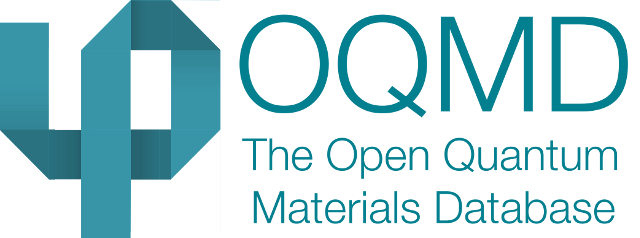Source code for qmpy.materials.element
# qmpy/materials/element
"""
Django models representing elements and species.
"""
from django.db import models
from qmpy.db.custom import DictField
from qmpy.utils import *
[docs]class Element(models.Model):
"""
Core model for an element.
Relationships:
| :mod:`~qmpy.Atom` via atom_set
| :mod:`~qmpy.Species` via species_set
| :mod:`~qmpy.Structure` via structure_set
| :mod:`~qmpy.Entry` via entry_set
| :mod:`~qmpy.Composition` via composition_set
| :mod:`~qmpy.Calculation` via calculation_set
| :mod:`~qmpy.Potential` via potential_set
| :mod:`~qmpy.Hubbard` via hubbards
| :mod:`~qmpy.HubbardCorrection` via hubbardcorrection_set
| :mod:`~qmpy.ReferenceEnergy` via referenceenergy_set
Attributes:
| **Identification**
| z: atomic number
| name: full atomic name
| symbol: atomic symbol
| group: group in the periodic table
| period: period in the periodic table
|
| **Physical properties**
| mass: Atomic mass, in AMU (float)
| density: Density at STP, in g/cm^3 (float)
| volume: Atomic volume at STP, in A^3/atom (float)
| atomic_radii: in A (float)
| van_der_waals radii: in A (float)
| covalent_radii: in A (float)
| scattering_factors: A dictionary of scattering factor coeffs.
|
| **Thermodynamic properties**
| melt: melting point in K
| boil: boiling point in K
| specific_heat: C_p in J/K
|
| **Electronic properties**
| electronegativity: Pauling electronegativity
| ion_energy: First ionization energy. (eV)
| s_elec: # of s electrons
| p_elec: # of p electrons
| d_elec: # of d electrons
| f_elec: # of f electrons
|
| **Additional information**
| production: Annual tons of element produced.
| abundance: Amount in earths crust (ppm)
| radioactive: Are all isotopes unstable?
| HHI_P: Herfindahl-Hirschman Index for production.
| HHI_R: Herfindahl-Hirschman Index for reserve
Note:
HHI values from Gaultois, M. et al. Chem. Mater. 25, 2911-2920 (2013).
"""
### Identification
z = models.IntegerField()
name = models.CharField(max_length=20)
symbol = models.CharField(max_length=9, primary_key=True)
### Periodic table
group = models.IntegerField()
period = models.IntegerField()
### Phyical characteristics
mass = models.FloatField()
density = models.FloatField()
volume = models.FloatField()
atomic_radii = models.IntegerField()
van_der_waals_radii = models.IntegerField()
covalent_radii = models.IntegerField()
scattering_factors = DictField()
### Thermodynamics
melt = models.FloatField()
boil = models.FloatField()
specific_heat = models.FloatField()
### Electonic structure
electronegativity = models.FloatField()
first_ionization_energy = models.FloatField()
s_elec = models.IntegerField()
p_elec = models.IntegerField()
d_elec = models.IntegerField()
f_elec = models.IntegerField()
### misc
HHI_P = models.FloatField(default=0)
HHI_R = models.FloatField(default=0)
production = models.FloatField(default=0)
radioactive = models.BooleanField(default=False)
class Meta:
app_label = "qmpy"
db_table = "elements"
# builtins
def __str__(self):
return self.symbol
# accessor
[docs] @classmethod
def get(cls, value):
"""
Return an element object. Accepts symbols and atomic numbers, or a list
of symbols/atomic numbers.
Examples::
>>> Element.get('Fe')
>>> Element.get(26)
>>> Element.get(['Fe', 'O'])
"""
if isinstance(value, cls):
return value
elif isinstance(value, list):
return [cls.get(v) for v in value]
elif isinstance(value, int):
return cls.objects.get(z=value)
elif isinstance(value, str):
return cls.objects.get(symbol=value)
# methods
def species_distribution(self):
counts = {}
for s in self.species_set.all():
counts[s.ox] = s.structure_set.count()
return counts
[docs]class Species(models.Model):
"""
Base model for an atomic species. (Element + charge state).
Relationships:
| :mod:`~qmpy.Element` via element
| :mod:`~qmpy.Entry` via entry_set
| :mod:`~qmpy.Structure` via structure_set
Attributes:
| name: Species name. e.g. Fe3+, O2-
| ox: Oxidation state (float)
"""
name = models.CharField(max_length=8, primary_key=True)
element = models.ForeignKey(
Element, blank=True, null=True, on_delete=models.CASCADE
)
ox = models.FloatField(blank=True, null=True)
class Meta:
app_label = "qmpy"
db_table = "species"
# builtins
def __str__(self):
return str(self.name)
# accessor
[docs] @classmethod
def get(cls, value):
"""
Gets or creates the specified species.
Arguments:
value:
Accepts multiple input types. Can be a string, e.g. Fe3+
or a tuple of (symbol, oxidation state) pairs, e.g. (Fe, 3).
Return:
A :mod:`~qmpy.Species` or list of :mod:`~qmpy.Species`.
Examples::
>>> Species.get('Fe3+')
>>> Species.get('Fe3')
>>> Species.get(('Fe', 3))
>>> Species.get([ 'Fe3+', 'O2-', 'Li1+'])
"""
if isinstance(value, cls):
return value
elif isinstance(value, str):
spec, new = cls.objects.get_or_create(name=value)
if new:
elt, ox = parse_species(value)
spec.element_id = elt
spec.ox = ox
spec.save()
return spec
elif isinstance(value, list):
return [cls.get(value) for value in list]
@property
def ox_format(self):
if self.ox is None:
return 0
elif is_integer(self.ox):
return int(self.ox)
else:
return float(round(self.ox, 3))
